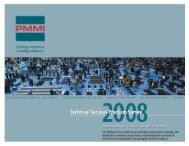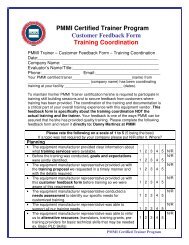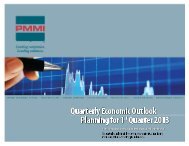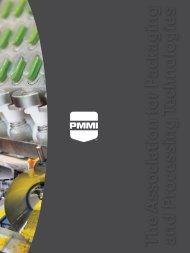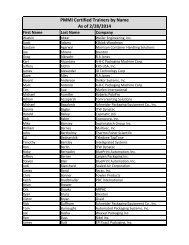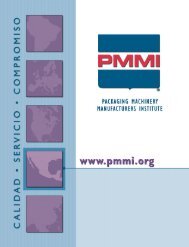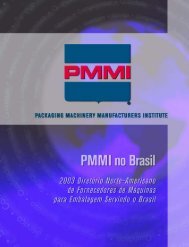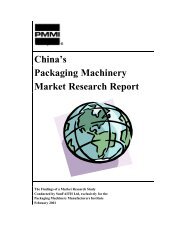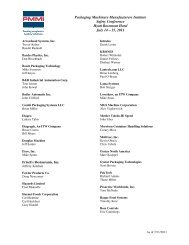Canadian Packaging Machinery Market Research Report - PMMI
Canadian Packaging Machinery Market Research Report - PMMI
Canadian Packaging Machinery Market Research Report - PMMI
Create successful ePaper yourself
Turn your PDF publications into a flip-book with our unique Google optimized e-Paper software.
As a result of the U.S.-Canada Free Trade Agreement (FTA), which went into effect<br />
in January 1989, virtually all <strong>Canadian</strong> tariffs on U.S. products have been eliminated.<br />
The North American Free Trade Agreement (NAFTA), which replaced the FTA in<br />
January 1994, removed some remaining barriers and expanded specific provisions of<br />
the FTA. However, certain non-tariff barriers at both the federal and provincial levels<br />
continue to impede the access of U.S. goods and services to Canada or retard<br />
potential export growth. These non-tariff barriers include standards and practices<br />
related to government procurement policies, provincial liquor boards, service exports<br />
and cultural industries.<br />
There are no significant trade barriers impeding exports of U.S. packaging machinery<br />
to Canada. Under the U.S.-Canada Free Trade Agreement and its successor, the<br />
North American Free Trade Agreement, tariffs on all U.S.-origin packaging machinery<br />
were eliminated as of January 1, 1998. Equipment originating from the United States<br />
that satisfy NAFTA Rules of Origin requirements are entitled to a zero percent tariff.<br />
Equipment that does not satisfy the Rules of Origin or that originate from other<br />
countries is subject to the Most Favored Nation tariff, which is 3.4 percent. Rules of<br />
Origin outlined in NAFTA are used to determine whether a product or piece of<br />
equipment originates in Canada, the Unites States, or Mexico and is thereby eligible<br />
for duty-free entry to the respective markets.<br />
All commercial shipments exported to Canada require a properly completed Canada<br />
Customs Invoice or its equivalent. In addition, shipments of U.S.-produced goods<br />
must be accompanied by a completed NAFTA Certificate of Origin in order to obtain<br />
tariff-free treatment under the provisions of the North American Free Trade<br />
Agreement. For further information, contact the Canada Customs and Revenue<br />
Agency representative at the <strong>Canadian</strong> Embassy in Washington at Tel: (202) 682-<br />
1740 or Fax: (202) 682-7689.<br />
Non-tariff barriers are not a significant factor affecting U.S.-Canada trade in<br />
packaging equipment. There are no technical standards established by the<br />
<strong>Canadian</strong> government for imported packaging equipment. However, all electrically<br />
powered products sold in Canada must comply with <strong>Canadian</strong> law requiring<br />
compliance with federal standards established by the <strong>Canadian</strong> Standards<br />
Association (CSA). Information pertaining to the certification process and copies of<br />
the applicable standards can be obtained by contacting the CSA.<br />
On January 1, 1991, the <strong>Canadian</strong> Federal Government supplanted its 13.5 percent<br />
Federal Sales Tax on manufactured goods with a seven-percent Goods and Services<br />
Tax (GST). The GST is a value-added consumption tax, which is applied to all<br />
domestic and imported goods and services sold in Canada. The GST on imports is<br />
initially levied on the freight on board (FOB) price plus applicable <strong>Canadian</strong> customs<br />
duties, if any. For more information regarding the GST, exporters should contact<br />
Canada Customs and revenue Agency.<br />
U.S. exporters of packaging equipment must comply with bilingual and other<br />
packaging and labeling practices in Canada. Directions for use, warranty certificates<br />
SMG/Columbia Consulting Group Page 9



